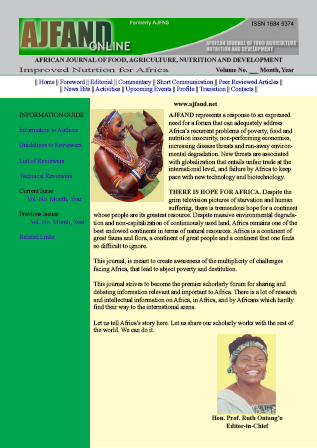Vitamin A (VA) deficiency (VAD) is a major nutritional public health problem among children under-5-years-old in the developing world including Kenya. A community-based crosssectional survey among 1,630 children (aged 6-23 mos) was undertaken in Western Kenya. A questionnaire was administered to collect demographic, socio-economic and dietary intake information. Prevalence of low retinol-binding protein (RBP) concentrations was assessed using Dried Blood Spot (DBS) methodology. Analysis of RBP was carried out using rapid enzyme immunoassay (EIA) and C-reactive protein (CRP) was carried out using enzyme linked immunosorbent assay (ELISA) to estimate VA and sub-clinical inflammation statuses, respectively. Values were adjusted for influence of inflammation using CRP (CRP >5 mg/L) and population prevalence of VAD (RBP <0.825 µmol/L, biologically equivalent to 0.70 µmol/L retinol) estimated. Anthropometric data gave three indices: stunting, wasting and underweight—all of which took age and sex into consideration. Mean (geometric± SD) concentration of RBP was adequate (1.56±0.79µmol/L) but the inflammation-adjusted mean (±SE) prevalence of VAD was high (20.1±1.1%) in this population. The level of CRP was within normal range (1.06±4.95 mg/L) whilst 18.4±0.9% of the children had subclinical inflammation (CRP>5 mg/L). Intake of VA capsule (VAC) by a child was a predictor of VAD with children who have not taken VA during the past 1 year prior to the survey having a 30% increased risk of VAD (OR (CI): 1.3 (1.1-1.7); p=0.025. Additionally, age of the child was a predictor with older children (18-23 mos) having a 30 % increased risk of VAD (OR (CI): 1.3 (1.1-1.9); p=0.035); the caretaker’s knowledge on VA and nutrition was also a predictor of VAD with children whose caretaker’s had poor knowledge having a 40 % increased risk of VAD (OR (CI): 1.4 (1.0-1.9); p=0.027. A child’s district of residence was also a significant predictor of VAD. Prevalence of VAD in this sample of infants was high. Predictors of VAD included child intake of VAC in the last 1 year before the survey, older children, children whose caretakers had poor VA and nutritional knowledge and a child’s district of residence. There is a need to improve knowledge on nutrition and VA of caretakers; undertake a targeted VAC distribution, particularly in children older than 1 year and above and use a sustainable food-based intervention in the areas with severe VAD.
Prevalence and predictors of vitamin a deficiency among infants in Western Kenya using a cross-sectional analysis.
Citation: Oyunga, M.A.; Grant, F.K.E.; Omondi, D.O.; Ouedraogo, H.; Levin, C.; Low, J.W. 2016. Prevalence and predictors of vitamin a deficiency among infants in Western Kenya using a cross-sectional analysis. African Journal of Food, Agriculture, Nutrition and Development. ISSN 1684-5374. 16(1):10765-10786.
2017-05-18
NUTRITION, SWEETPOTATO AGRI-FOOD SYSTEMS, SWEETPOTATOES
Africa, Eastern Africa
Kenya
journal_article

